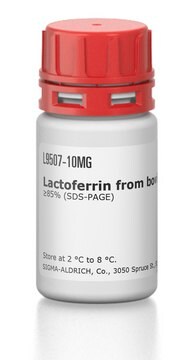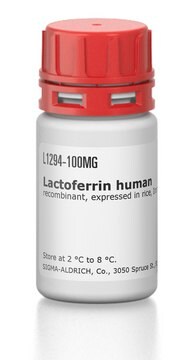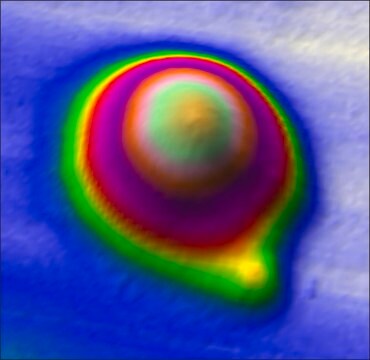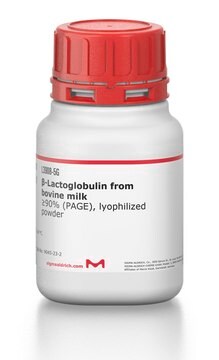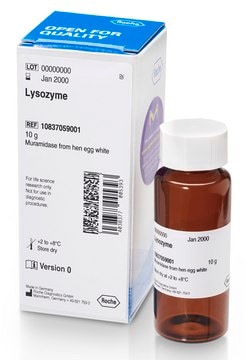L4765
Lactoferrin from bovine colostrum
≥85% (SDS-PAGE)
About This Item
Productos recomendados
biological source
bovine colostrum
assay
≥85% (SDS-PAGE)
form
powder
mol wt
~90 kDa
technique(s)
electrophoresis: suitable
ion chromatography: suitable
impurities
salt, essentially free
solubility
H2O: soluble 5 mg/mL
UniProt accession no.
storage temp.
2-8°C
Gene Information
cow ... LTF(280846)
¿Está buscando productos similares? Visita Guía de comparación de productos
General description
Application
Biochem/physiol Actions
Storage Class
11 - Combustible Solids
wgk_germany
WGK 3
flash_point_f
Not applicable
flash_point_c
Not applicable
ppe
Eyeshields, Gloves, type N95 (US)
Certificados de análisis (COA)
Busque Certificados de análisis (COA) introduciendo el número de lote del producto. Los números de lote se encuentran en la etiqueta del producto después de las palabras «Lot» o «Batch»
¿Ya tiene este producto?
Encuentre la documentación para los productos que ha comprado recientemente en la Biblioteca de documentos.
Nuestro equipo de científicos tiene experiencia en todas las áreas de investigación: Ciencias de la vida, Ciencia de los materiales, Síntesis química, Cromatografía, Analítica y muchas otras.
Póngase en contacto con el Servicio técnico